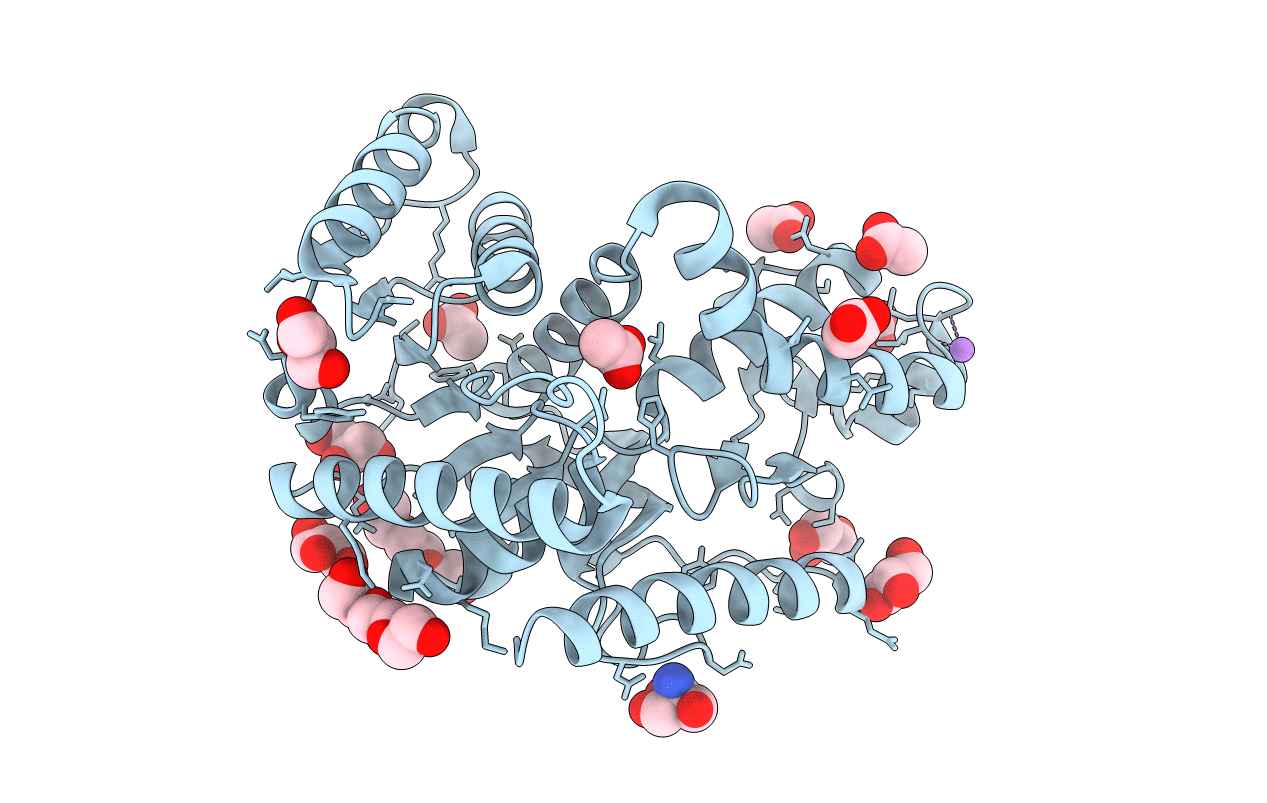
Deposition Date
2014-04-11
Release Date
2015-02-25
Last Version Date
2023-09-20
Entry Detail
PDB ID:
4Q3N
Keywords:
Title:
Crystal structure of MGS-M5, a lactate dehydrogenase enzyme from a Medee basin deep-sea metagenome library
Biological Source:
Source Organism:
unidentified (Taxon ID: 32644)
Host Organism:
Method Details:
Experimental Method:
Resolution:
1.97 Å
R-Value Free:
0.18
R-Value Work:
0.14
R-Value Observed:
0.14
Space Group:
I 41 2 2


